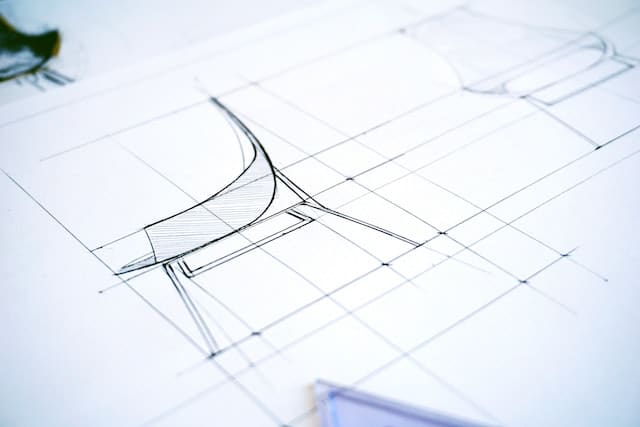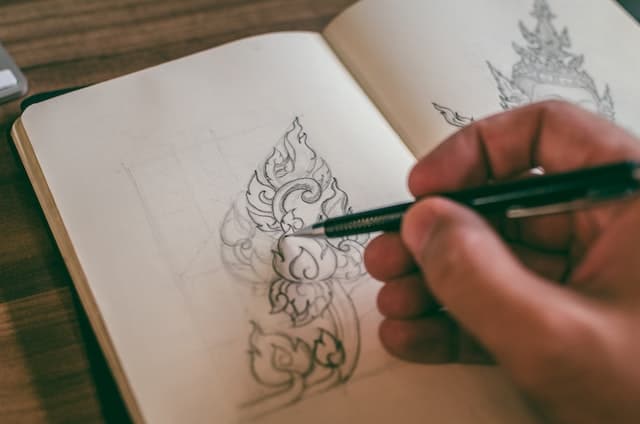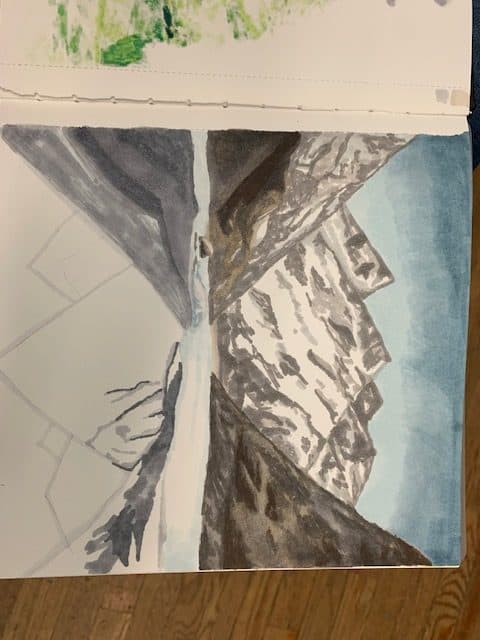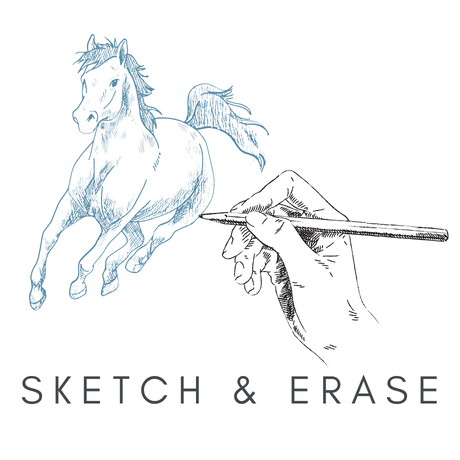Lines are one of the most foundational elements needed for drawing. When an artist draws or sketches, they use different types of lines to convey emotion, movement, or to recreate the objects we see in the world around us. One of the most important things a beginning artist can learn is the different types of lines and how to use them.
The most common types of lines include vertical, horizontal, diagonal, curved and straight lines. Every line in art has it’s own shape, direction, weight and value. All of these characteristics are combined by the artist to create different types of sketching lines: contour lines, construction lines, measuring lines, perspective lines, gesture or rhythm lines, and shading lines.
Contour Lines
Contour lines are some of the earliest lines we learn to draw as kids, these are simply the lines that show the outline of an object. Think about a coloring book where you just have an outline of an object and the inside is blank where you color it in. In sketches and drawings, the contour lines are often thick, dark lines that show a contrast between the object being drawn and other objects like the background. Sometimes contour lines are drawn in lightly at the beginning of the sketching process, and then once the piece is more refined, the artist will go back over those contour lines with a darker pencil or a thicker stroke to make that outline clear and distinct. One of the easiest mistakes to fall into is thinking that your contour lines need to be perfect before you start drawing any other lines. Oftentimes, it’s easier to start with construction lines that are quickly done and easy to erase, so that any mistakes or changes in shape or perspective can be done before putting in the bold contour lines.
Construction Lines
Construction lines are used in sketches to quickly map out the major segments and shapes of the object being drawn. These lines are used as a guide, or a framework, to make sure the major pieces of the subject are in the correct location and are the correct size. Sometimes, construction lines look like basic shapes that are connected together.
For example, a cone with a rectangle stick at the bottom could eventually be refined into a tree, or a sphere could be refined into any number of objects, from an apple to a human skull. Construction lines are designed to be put down on the paper lightly and quickly, usually using an H pencil, so that the lines can be erased later.

Measuring Lines
Measuring lines are actually a type of construction line. Measuring lines are used to establish proportions or to space out items correctly. They are often used at the beginning of a sketch or drawing and are usually erased later, so they are done very lightly. You may have seen these used in drawings where someone is sketching a portrait of a person. Measuring lines are the horizontal and vertical intersecting lines that make a cross on a the subject’s face. There is usually one vertical line down the middle of the face to keep both sides of the face and nose symmetrical. Then there are usually horizontal lines that show where the eyes, the bottom of the nose, and the lips need to go. Having these lines in a sketch of a face helps the end result look natural and symmetrical. Measuring lines can also be used in technical drawings, like blueprints, drafting papers, or urban sketches where trees or buildings need to have the same height.

Perspective Lines
Perspective lines are also a type of construction line. They are used to show depth and proportion. Perspective lines are used to make items look like they are getting closer together and smaller as they get farther away. This would happen in a drawing with a path that goes off into the distance and eventually disappears, or in a sketch of a mountain with trees that get smaller and closer together as they get higher up the mountain.
Perspective lines are also used when drawing 3D shapes. They are used to mark the horizon line and vanishing points, and to make sure that the x, y, and z axes of the 3D shape are lining up correctly. If the perspective is off, a cube could look more like a flat box in the final drawing, so perspective lines can be very helpful.
Gesture or Rhythm Lines
Gesture lines are what they sound like: lines that show movement. This could be the curved line of a baseball player’s arm as he throws a pitch, or the curved arch of a ballerina’s legs while she’s leaping through the air. These lines are going to be more sketchy and flowing than contour lines, and they can often be used when drawing human models that need to be sketched out quickly. If you were drawing a human model who was hunched over in his chair, you would need a gesture line to recreate the curve of his spine and neck in your drawing.
Rhythm lines are similar, but they are usually used to connect items or objects within a sketch so that there is a visual flow to the piece.
Shading Lines
Shading lines are usually added later on in the drawing process, after the rough outline of the object has already been laid down. Shading lines can show shadow and light, and can help give a feeling of dimension to objects instead of leaving them flat and two dimensional. Shading can be added with different values (think about 2B pencils vs. 5B pencils) to give different depths to the shadows. Shading can also be created with different techniques such as hatching, stippling, or blending.

What Should I Start With as a Beginner?
You might think that contour lines are the easiest to start with as a beginner, but it’s actually easier to learn to draw complex objects by breaking them up into smaller parts. If you are trying to draw a horse, it’s going to be a lot more difficult to get the shape and perspective correct if you just start drawing the outline. Learning to start with construction lines and basic shapes takes a little bit of practice, but it will help your brain learn to break down every day objects into smaller parts. This will help take your drawings to the next level as you practice and get those foundational elements down pat.
Start with some tutorials or youtube videos that show you how to use these types of lines, and then practice, practice, practice.
